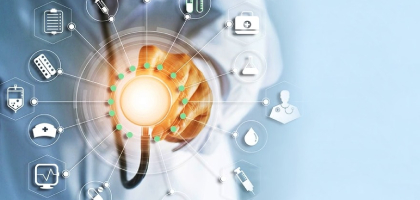
Insights
Omnichannel Platforms Empower Patients
Omnichannel Platforms Empower Patients
One of the features that have made health services much more easily accessible in recent years is Omnichannel systems. So what is the concept of Omnichannel, which we are hearing more and more every day, how is it used in the field of health and what are its benefits? In our article, we have listed in detail what you need to know about Omnichannel along with these questions. If you are ready, we can start with the definition of the concept of Ominchannel.
What is Omnichannel?
Omnichannel means that people are connected to more than one area within the same time period. In the field of omnichannel healthcare, it means that patients can communicate via portal, television or social media without physically going to a doctor's appointment.
Patients Prefer Omnichannel Platforms
The pandemic has forced both patients and providers to embrace new ways of communication through the internet, television, social media and etc. This has given both parties a taste of how digital collaboration can make interactions more effective.
For example, in the pre-pandemic period, patients preferred to go to hospitals or clinics to receive face-to-face healthcare instead of telehealth solutions. However, since entering and leaving hospitals or clinics involves a significant risk of covid-19, patients prefer to receive healthcare services in a virtual environment instead of meeting in person. While virtual doctor appointments may not meet the needs of all patients, they play a key role in the treatment of certain diseases.
Although the need for telehealth solutions continues to grow, many healthcare providers do not have the technology to provide accessibility and interoperability on a large scale. Researchs show that 80 percent of patients prefer to make their doctor's appointments digitally, but more than half of healthcare providers think offering online appointment is a very difficult option. The majority of hospitals and clinics continue to give appointments to their patients by phone or face-to-face communication.
Due to the high risk of face-to-face doctor appointments, the priority of healthcare providers was to ensure that patients access health services much more easily and safely. Because today patients want to get healthcare without risk, and that's why providers have to find much more effective solutions and methods.
Healthcare Systems and Digital Communications
While patients are looking for ways to get more effective healthcare services in the virtual environment, healthcare providers seek ways to provide more effective solutions with fewer employees or virtual environment workers. While professionals providing care services in general continued to work in offices, communication center employees and administrative staff moved to work from home. This situation stands out as evidence that inadequate communication technologies prevent the transition to effective and successful virtual health services.
Today, many healthcare providers' communication centers have quickly discovered that they do not have a technology that can adequately respond to factors that negatively affect daily workflow. As a result, healthcare organizations realized the importance of facilitating patients' access to healthcare services. Before the pandemic, some healthcare providers preferred to update their systems in line with changing patient expectations, but with the effect of the pandemic, many organizations think that modernization is a very urgent need to keep virtual doors open while they are closed.
Few of the healthcare systems have been using cloud-based omnichannel solutions in communication centers that enable teams to work remotely more effectively and quickly. Omnichannel solutions often significantly improve patients' access to healthcare experience. While hospitals and clinics were closing their doors or serving at certain hours in the first weeks of the pandemic, some patients had the chance to improve their healthcare service experience by using digital services.
The vast majority of patients think that getting basic and routine health care is much less complicated with digital communication technologies. To give an example, some providers have waived the obligation of in-person patient visits to go to the organization in order to renew prescriptions. In this way, patients can renew their prescriptions by communicating quickly with the hospital or clinic via a secure patient portal instead of going to the hospital by making a doctor's appointment. The transition to virtual healthcare has also significantly increased the effectiveness of healthcare providers. By transferring all the processes to digital, healthcare organizations can provide services to a much larger number of patients without the risk of Covid-19.
With the changing patient needs, modernized patient access and virtual care is not possible without having advanced contact center technologies. A very agile cloud-based platform is crucial for healthcare providers who want to provide very easy access to their patients.
Omnichannel Solutions Are Necessity
While the pandemic process has forced the healthcare sector to provide healthcare for patients in a more modernized way, the need to establish a very effective communication network has become more important. Therefore, healthcare providers should use multichannel, interdepartmental communication system instead of telephone technology.
Omnichannel solutions optimize the patient care services of healthcare organizations by ensuring a flawless communication through different channels. This feature is also one of the key points of much more effective and easy patient access. Nowadays, patients are using digital communication channels much more and digital communication tools (chat, text and video) will play a very important role in patient care.
Today, patients have so many options to get the healthcare they need. If healthcare providers cannot best meet their patients' needs, they will lose them. All points of patient access, including appointment scheduling, telemedicine, bill payment and claim management should be very simple, flexible and very secure.
In addition, you can have detailed information about counterfeit and substandard drugs by reading our article titled Counterfeit Medicine Kills.Source: https://bit.ly/3uRsxun









